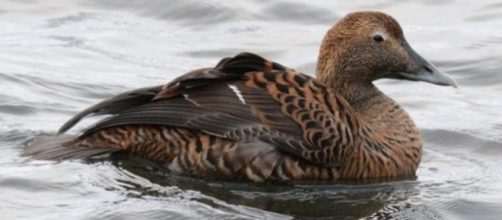Studies of beautiful bird plumage patterns have in the past focused on structural causes of feather coloration attributable to what birds eat. A flamingo eats algae and shrimp and turns pink or orange. A new study shows that complex plumage patterns are created because of melanin pigment controlled by specialized cells called melanocytes.
Carotenoid and melanin pigments
According to a study by Dr. Ismael Galván and a team of researchers at Spanish National Research Council of Madrid, Spain, in the Department of Evolutionary Ecology, bird colorations occur because of two kinds of pigments: carotenoids and melanins.
We know carotenoids because that's what makes carrots orange. We know melanins because that's what contributes to skin, eye and hair colorations.
To process carotenoid pigments, birds move these "photosynthetic" (light sensitive) pigments through their bloodstreams to specialized structures, called nanostructures, located at their feather follicles. To process melanin pigments, specialized cells called melanocytes, also located at feather follicles, synthesize the melanin pigment into colors. The first is a structural process, and the second is a cellular process.
Complex plumage patterns
Complex arrays of bird coloration are possible when the carotenoid nanostructure pigments and the melanin cellular pigments come together through the feather follicle to develop complex patterns that dazzle us.
Galván uses the example of peacock feathers, specifically the "upper covert feathers," which exhibit a mixture of carotenoid green with melanin brown and black. Dr. Galván's team defines "complex patterns" as two or more colors in an arrangement occurring two or more times in one feather or across adjacent feathers.
Melanin-based complex patterns
Complex plumage patterns can be comprised of solely melanin colors, solely carotenoid colors, or a combination of melanin and carotenoid colors. Fully 98 percent of the small group within the 9,000 species examined that can display complex patterns (merely 32 percent of the 9,000) exhibit melanin-based complex patterns, either solely melanin or melanin plus carotenoid pigments.
Peacock upper covert feathers, as in Galván's example, present a complex plumage pattern that is a combination of melanin and carotenoid colors, making it a melanin-based complex pattern. Galván's study, "Complex Plumage Patterns Can Be Produced Only with the Contribution of Melanins," was published in Physiological and Biochemical Zoology and answers the question of how bird feathers display detailed colorful patterns.


